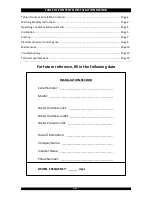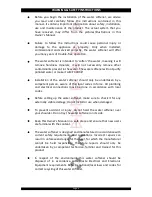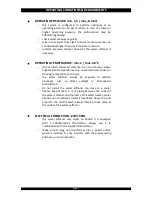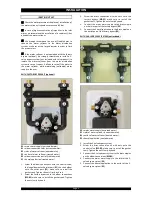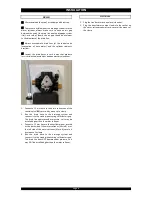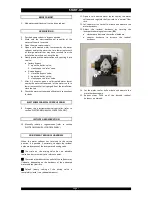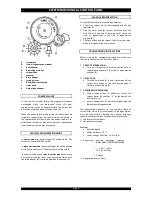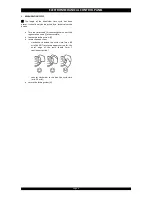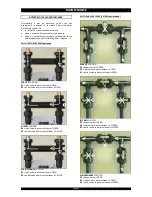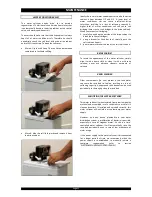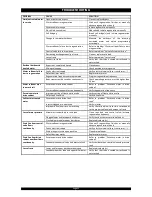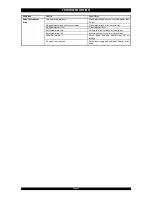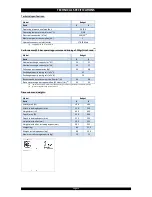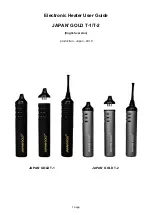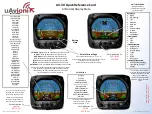
INSTALLATION
Page 6
DRAIN
We recommend the use of a stand pipe with air trap.
To prevent backflow from the drainage system into the
water softener, always make sure to have an air gap
between the end of the drain line and the drainage system
itself; as a rule of thumb, the air gap should be minimum
2x the diameter of the drain line.
Always use separate drain lines for the control valve
(evacuation of rinse water) and the softener cabinet's
overflow.
Lay-out the drain hoses in such a way that pressure
loss is minimized; avoid kinks and unnecessary elevations.
1.
Connect a 13 mm hose to the drain connection of the
control valve (
); secure it by means of a clamp.
2.
Run the drain hose to the drainage system and
connect it to the stand pipe assuring sufficient air gap.
This drain line operates under pressure, so it may be
installed higher than the water softener.
3.
Connect a 13 mm hose to the overflow elbow, located
at the back side of the water softener (Micro-4) or at
the left side of the water softener (Micro-6); secure it
by means of a clamp.
4.
Run the drain hose to the drainage system and
connect it to the stand pipe assuring sufficient air gap.
This drain line does NOT operate under pressure, so it
may NOT be installed higher than the water softener.
ELECTRICAL
1.
Plug the transformer into an electrical outlet.
2.
Plug the transformers output lead into the socket on
the water softeners power cord; secure it by means of
the clamp.


